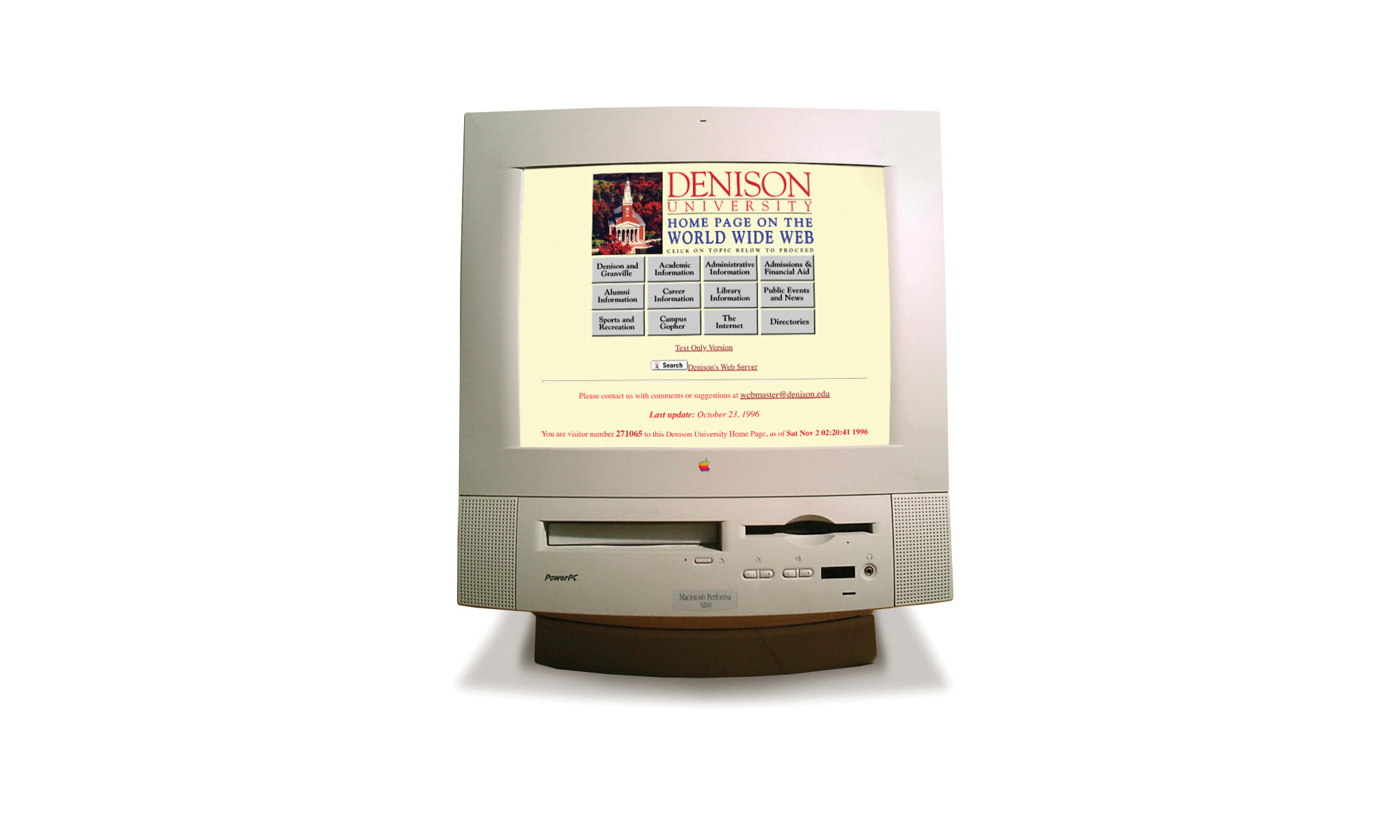The 1990s were interesting times in college communications, just as they were in the field of public relations more generally. The long-established model of reliance on print and broadcast media for external visibility was changing rapidly as the World Wide Web was becoming more accessible to a greater number of target audiences.
Institutional websites were methodically replacing newspapers and radio and TV stations as sources of information. As early adopters of web communications (or “new media,” as it was called), colleges had instant, constant, and direct access to the public and academic colleagues across higher education. And the internet had no geographic limitations.
Most college websites were born of rudimentary text-only online documents that were used to communicate internally through a local campus-wide information system, or CWIS, sometimes called a campus Gopher (based on an open-source file transport protocol developed at the University of Minnesota). Prior to Denison’s venture onto the World Wide Web, faculty, staff, and students were already accessing one another’s information on local Gopher servers in the basement of Fellows Hall.
As the university made an incremental transition to the public web, there were differing opinions across campus as to the mission of the website, which the Office of Computing Services initially controlled. Many faculty saw the globally accessible World Wide Web as a place universities should use for scholarly endeavors — a platform for collaborating on research and distributing knowledge. School libraries also viewed the web as providing a quantum leap in how they shared publications.
On the other hand, Denison’s administrators in admission, communications, advancement, and athletics were quick to see the potential of this new medium to communicate directly with prospective students, parents, alumni, donors, volunteers, and the media. Every college experienced the same growing pains as the promotional potential of the web began to influence visual site design and content development, especially with the emergence of digital imaging.
As Denison entered the onramp to the “information superhighway,” as it was called by politicians and the media, we had concerns about the accessibility of our information based on variables like who did or did not have an internet connection and the speed of those connections. Back then, “broadband” was not widely available, and we were designing digital content to be consumed by slow modems in far-off places.
Nevertheless, it was an exhilarating time for those of us working in the fields of institutional communications, content creation and distribution, and constituent relations. I often told others here at the university and elsewhere that it was “exciting to be in the information business in the information age.”
Now, decades later, it still is.
Jack Hire is the senior writer for Advancement Communications and has worked in a variety of positions at Denison since 1974. In 2000, after taking Denison’s sports promotion efforts online, he became the college’s first editor of new media in University Communications.

